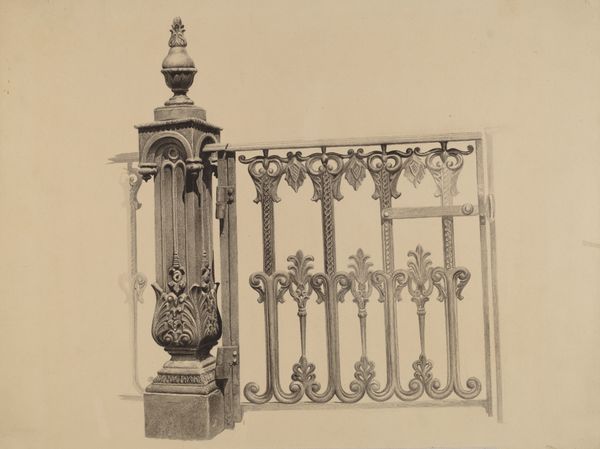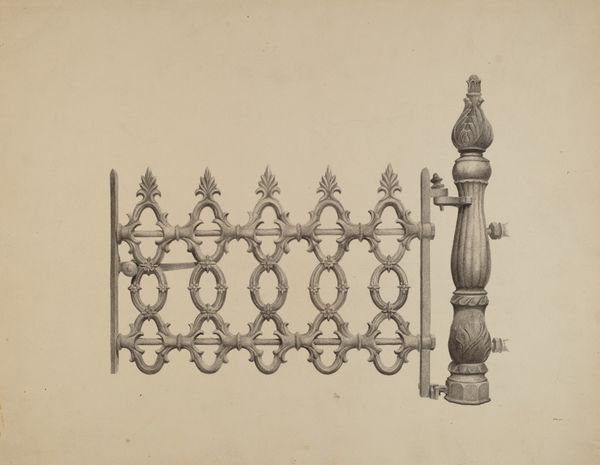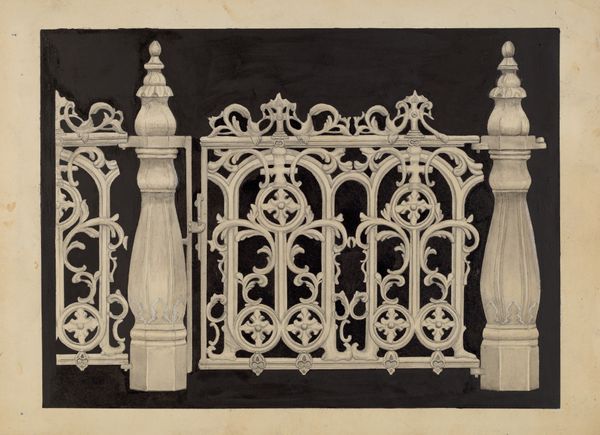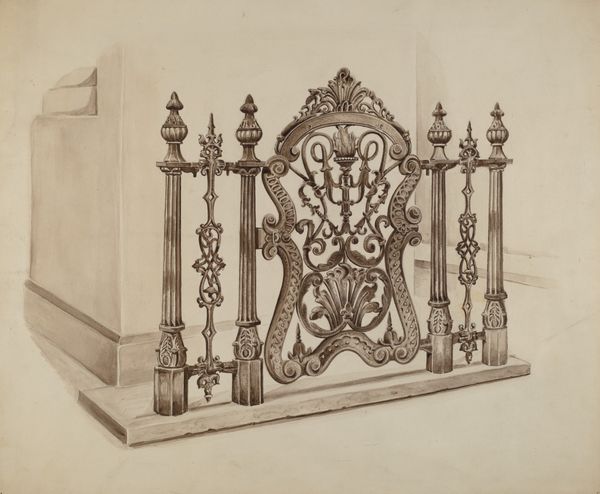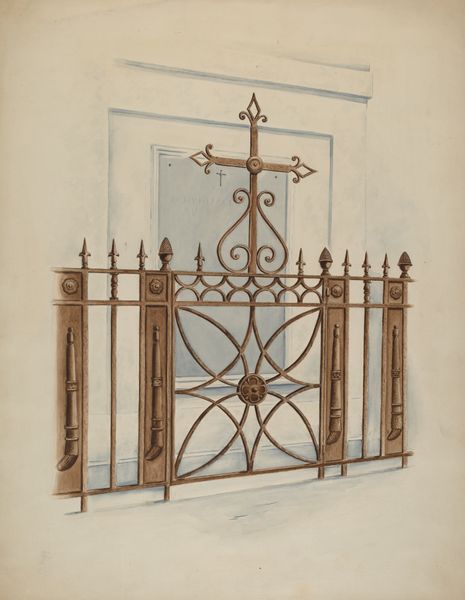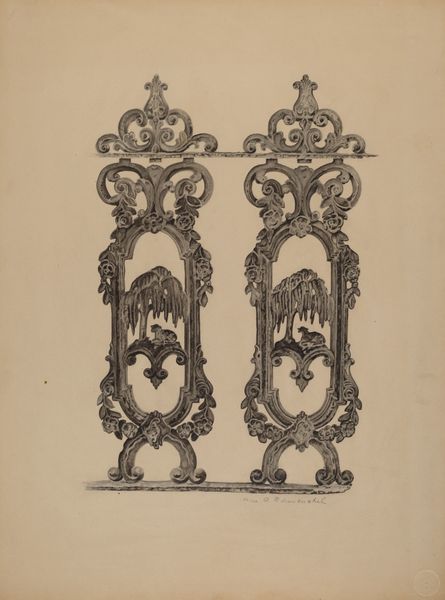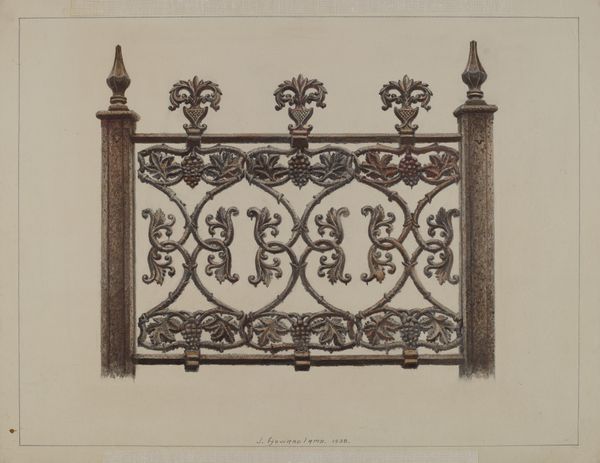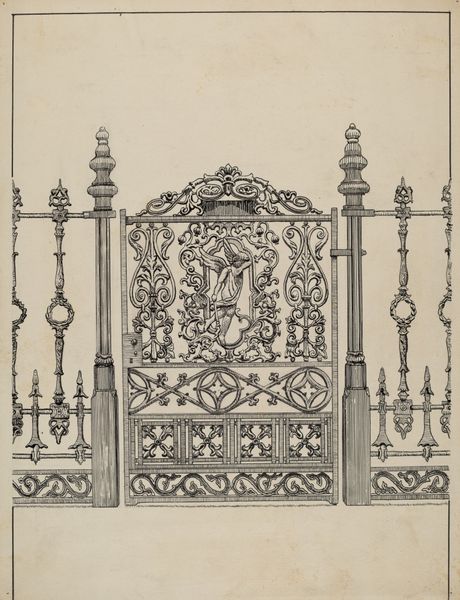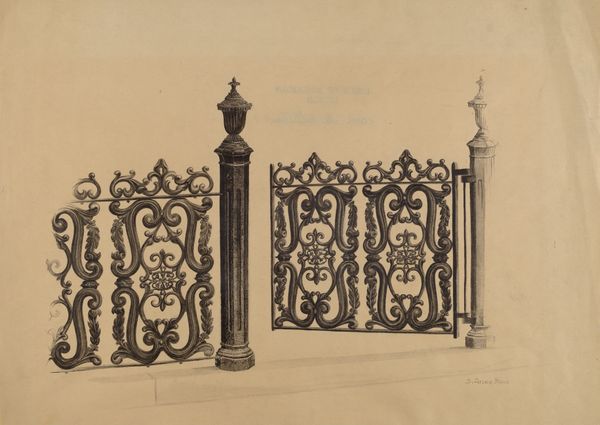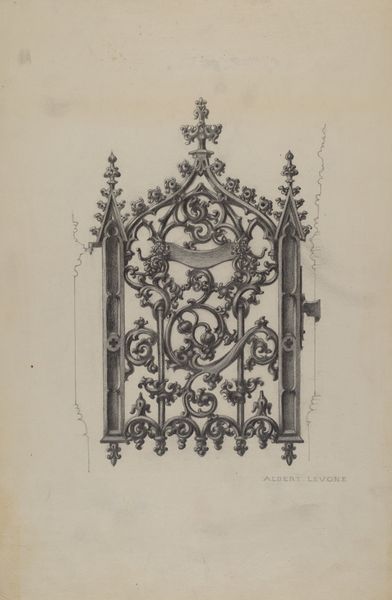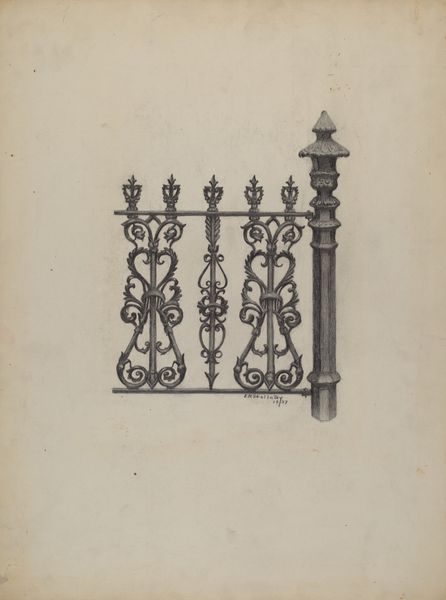
drawing, pencil
#
drawing
#
geometric
#
pencil
#
line
#
realism
Dimensions: overall: 27.9 x 35.7 cm (11 x 14 1/16 in.)
Copyright: National Gallery of Art: CC0 1.0
Curator: Today, we're looking at Jerome Hoxie’s drawing, “Gate and Gatepost,” from around 1939. Executed in pencil, it depicts exactly what the title suggests: a section of a decorative gate and its accompanying post. Editor: There's something haunting about it, a kind of forgotten elegance. The grey tones of the pencil, combined with the subject matter, gives it the feel of an architectural fragment rescued from a lost world. Curator: That’s interesting. For me, it’s less about ghosts and more about process. You know, Hoxie took care to represent ironwork using a humble pencil, a soft medium rendered into a depiction of something so unyielding. Look closely; you can see each precisely defined line. I see the labor and care he put into it. Editor: Yes, it’s impossible to ignore the precision. And think about what a gate *means*. It’s about inclusion and exclusion, thresholds, and societal boundaries, ideas about belonging but also surveillance and separation, too. Who is allowed in, who is kept out, and by whom? Curator: Gates were commonly crafted by skilled laborers; black smiths formed, welded, and assembled it all. You have this really physical, hands-on creation re-created by the hand of an artist working on paper. It's a second level of material manipulation. Editor: Absolutely. We can see that tension here. And if we position this work within its historical context, made on the brink of World War II, doesn’t the image of a gate—an object of defense and division—resonate with an ominous weight? Is this an objective record of a common structure or a commentary on a society closing ranks? Curator: Well, even focusing just on Hoxie's rendering of material--it's graphite on paper imitating the properties of forged iron. It’s an exploration of representation itself, how one substance can convincingly evoke another through skill and technique. Editor: Still, I wonder if the drawing itself questions how concepts of public versus private get materialised in the gates and boundaries we construct, not just in times of conflict but at any given point in history. The question then becomes, are we looking at an entryway or a barrier? Curator: The material itself seems to say, that to Hoxie, technique matters more. Editor: And technique as the conveyance for a complex range of questions relating to society and belonging. Curator: Exactly. There's always so much more to see if we're willing to look closely at artistic construction and production itself. Editor: Indeed, layers upon layers.
Comments
No comments
Be the first to comment and join the conversation on the ultimate creative platform.
